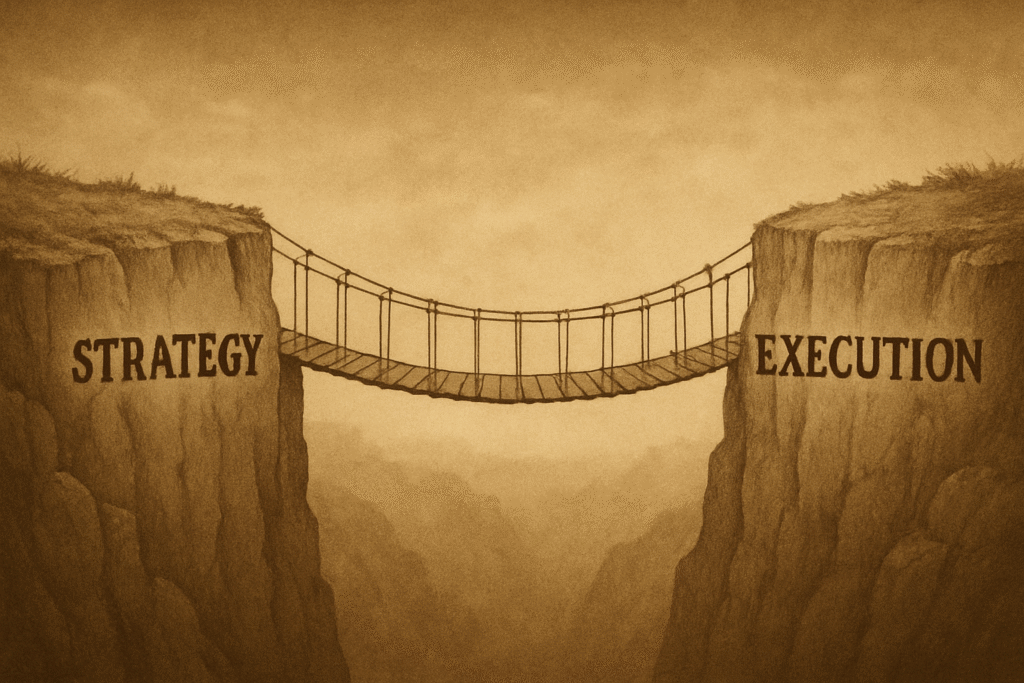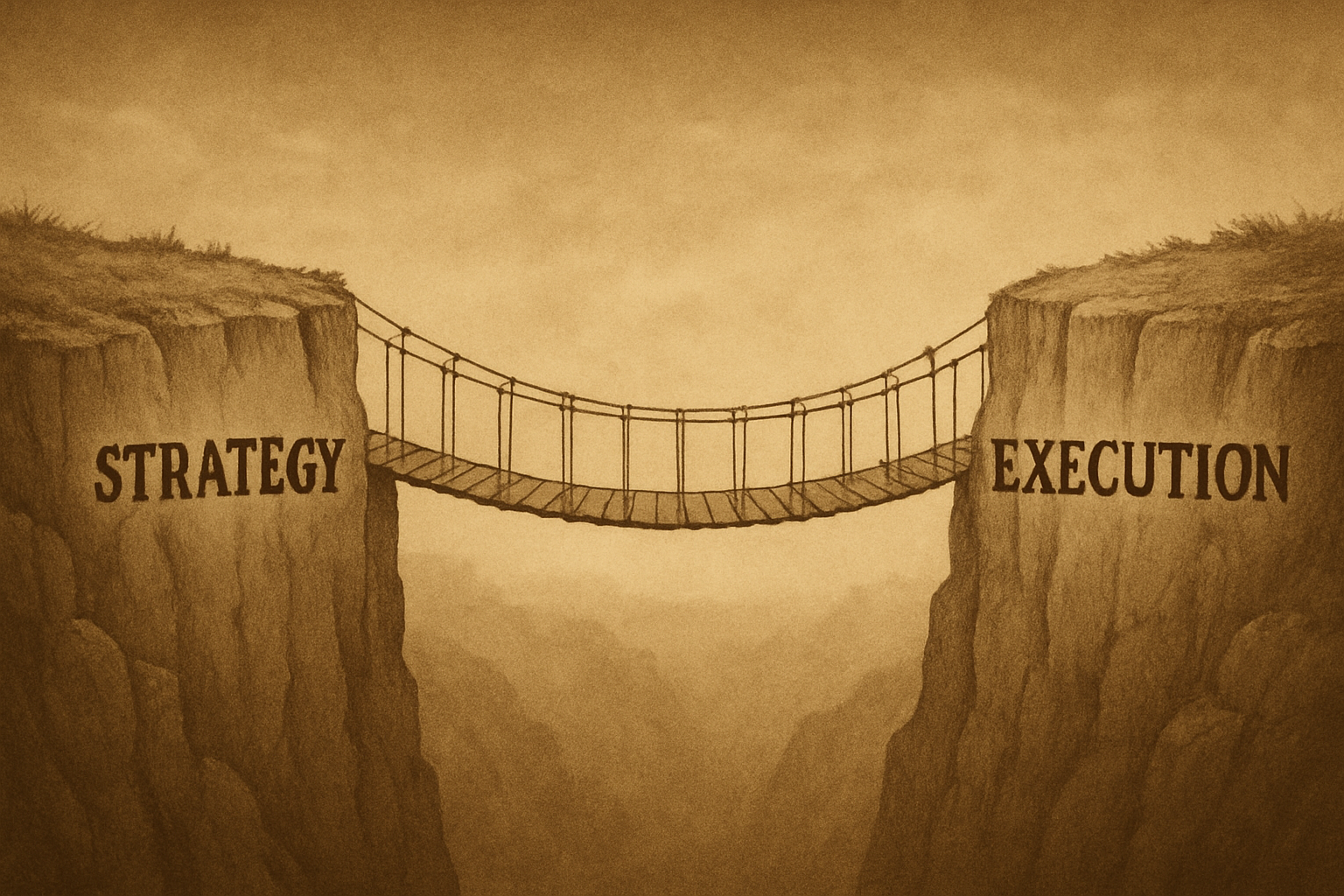The DG Role in Sponsorship
In Canada’s federal system, Directors General (DGs) hold a pivotal but often underappreciated role in driving transformation. Positioned between the strategic direction of Assistant Deputy Ministers (ADMs) and the operational realities of Directors and Managers, DGs are uniquely placed to translate high-level change into departmental execution.

In periods of transformation, DGs are not just program managers. They are integrators, interpreters, and sponsors who ensure that reforms move beyond vision into practice. This blog explores how DGs contribute to effective transformation sponsorship, balancing urgency with patience, and aligning operations with strategy.
DGs as Translators of Change
DGs operate at a critical juncture in the sponsorship chain:
- Upward Translation: They convey operational realities, risks, and opportunities to ADMs, informing strategy with grounded insight.
- Downward Translation: They interpret strategic imperatives into actionable priorities for Directors and their teams.
- Lateral Translation: They work across DG peers to reduce silos, integrate programs, and synchronize reforms.
This three-way translation function allows DGs to act as the nervous system of transformation, ensuring that messages, intent, and expectations flow coherently across the organization (Bourgon, 2011).
The Sponsorship Responsibilities of DGs
In a transformational context, DGs’ sponsorship responsibilities extend well beyond routine management. They must:
- Model Commitment: DGs signal the seriousness of transformation by prioritizing reform goals in branch planning and by visibly demonstrating their own buy-in.
- Enable Middle Managers: By sponsoring Directors and Managers, DGs provide cover, resources, and guidance for implementing reforms.
- Balance Continuity and Change: DGs must protect critical operational functions while enabling the reallocation of attention and resources toward transformation.
- Promote Cross-Silo Integration: DGs are well placed to lead horizontal collaboration across branches or portfolios.
- Sustain Morale and Momentum: As staff often look to DGs for stability, visible and consistent DG sponsorship builds confidence in the reform’s durability.
Urgency and Patience at the DG Level
DGs embody the paradox of urgency and patience in transformation:
- Urgency:
- Staff look to DGs for signals on how quickly reforms should be enacted.
- DGs must communicate that transformation is a priority, not optional.
- They often deliver the “early wins” that ADMs and Ministers need to sustain momentum.
- Patience:
- DGs must guard against burnout by pacing reform appropriately.
- They temper staff anxiety by demonstrating consistency and stability.
- They steward reforms that may take years, outlasting political cycles and turnover.
This ability to calibrate urgency and patience is a hallmark of DG leadership (Heifetz, Grashow, & Linsky, 2009).
Challenges Facing DGs in Sponsorship
- Conflicting Signals from Above
- Ministers, DMs, and ADMs may emphasize different priorities. DGs must reconcile these tensions without paralyzing their teams.
- Operational Pressures
- DGs remain accountable for ongoing program delivery. Balancing transformation with “keeping the lights on” is a constant tension.
- Resource Constraints
- DGs often must reallocate existing staff and budgets without new resources, requiring careful sponsorship and prioritization.
- Staff Fatigue
- At the operational level, staff may experience reform fatigue from successive waves of transformation. DGs must reframe each reform as purposeful and connected to mission.
Strategies for Effective DG Sponsorship
1. Clarify and Contextualize the Narrative
DGs must frame transformation in terms staff can relate to—how it affects their programs, clients, and day-to-day work.
2. Enable and Protect Directors
By acting as both sponsor and shield, DGs protect Directors from conflicting demands while ensuring they are empowered to lead reform within their units.
3. Institutionalize Cross-Branch Collaboration
DGs can convene horizontal working groups, integrate transformation into committee structures, and create space for experimentation across silos.
4. Balance Accountability with Flexibility
DGs should hold Directors accountable for progress while allowing adaptation to operational realities.
5. Be Visibly Present
DGs should attend staff meetings, town halls, and reform updates—not just delegate them—to model their sponsorship commitment.
Case Example: DGs in Service Modernization
In one federal department, DGs were tasked with implementing a new digital service delivery model.
- Translation: They converted ADM-level strategic goals into clear deliverables for Directors, such as service redesign pilots.
- Sponsorship: DGs shielded Directors from excessive reporting demands by creating streamlined accountability structures.
- Integration: DGs collaborated laterally across branches to ensure IT, HR, and policy reforms supported the same service goals.
- Modeling Patience and Urgency: They communicated the urgency of digital adoption while pacing rollout to avoid staff burnout.
The initiative succeeded in delivering both short-term wins and long-term structural improvements—largely because DGs served as effective sponsors and integrators.
Risks of Weak DG Sponsorship
When DGs fail to act as sponsors, reforms falter in predictable ways:
- Disconnection: Directors and staff see reforms as “head office priorities” rather than operational imperatives.
- Fragmentation: Without DG-level integration, reforms proceed in silos, undermining coherence.
- Erosion of Trust: If DGs appear disengaged, staff perceive transformation as optional or cosmetic.
- Overburdening of Directors: Without DG cover, Directors are left to manage conflicting demands and may deprioritize transformation.
Research shows that mid-to-senior managers like DGs are often the decisive variable in whether large-scale reforms succeed (Kotter, 2012; Pollitt & Bouckaert, 2017).
DGs as the Bridge Between Vision and Practice
DGs’ strength lies in their ability to connect the strategic and the operational:
- They reassure ADMs that reforms are feasible and on track.
- They reassure Directors and staff that reforms are coherent and supported from above.
- They reassure peers that transformation is integrated, not fragmented.
In this bridging role, DGs are essential to creating the “golden thread” of sponsorship that connects Ministers, DMs, ADMs, DGs, and staff into a coherent system.
Supporting DG Sponsorship
Organizations can strengthen DG-level sponsorship by:
- Leadership coaching to help DGs refine their translation and sponsorship skills.
- Communities of practice across DG cohorts to share strategies and challenges.
- Governance structures that formally recognize DG sponsorship roles in transformation boards.
- Resource flexibility that allows DGs to shift capacity in support of reform.
Conclusion: DGs as Transformation Sponsors
DGs are more than operational managers—they are the linchpins of transformation. Positioned at the intersection of vision and execution, they translate strategy into action, balance urgency with patience, and integrate across silos.
Without strong DG sponsorship, reforms risk fragmentation, fatigue, and failure. With it, transformation becomes embedded in the everyday work of government, delivering results that endure.
What’s Next?
Institute X works with DGs to strengthen their ability to sponsor transformation, build cross-branch integration, and balance urgency with patience in service of lasting change.
References
- Bourgon, J. (2011). A New Synthesis of Public Administration: Serving in the 21st Century. McGill-Queen’s University Press.
- Heifetz, R. A., Grashow, A., & Linsky, M. (2009). The Practice of Adaptive Leadership. Harvard Business Review Press.
- Kotter, J. (2012). Leading Change. Harvard Business Review Press.
- Pollitt, C., & Bouckaert, G. (2017). Public Management Reform: A Comparative Analysis – Into the Age of Austerity. Oxford University Press.

